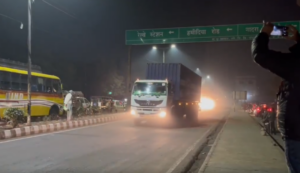Indian authorities said today that they have completed the transfer of toxic waste from the site of the worst industrial accident in history in 1984 to Bhopal, India, where a toxic gas leak killed more than 5,000 people.
The toxic waste was taken to a sewage disposal facility where it will take three to nine months to be incinerated.
In the early morning hours of December 3, 1984, methyl isocyanate leaked from a fertilizer plant owned by the U.S. chemical company Union Carbide, poisoning more than half a million people in Bhopal, the capital of the Indian state of Madhya Pradesh.
Twelve sealed containers carrying 337 metric tons of toxic waste for incineration arrived today at the Pitabur plant, 230 kilometers from Bhopal, amid draconian security measures, Swatandra Kumar Sikh, the director of the recovery agency from the Bhopal tragedy, told Reuters.
A trial for dumping 10 metric tonnes of waste was carried out in 2015 and the dumping of the remaining 337 metric tonnes will be completed within three to nine months, the state government said in a statement.
Sikh said the test for the waste discharge was carried out by the federal pollution control agency, which found that the emission standards are in line with the proposed national ones.
Sih explained that the discharge process is environmentally safe and will be conducted in a manner that will not harm the local ecosystem.
However, Rahna Dingra, a Bhopal-based activist who has worked with survivors of the tragedy, said the solid waste after incineration will be buried in a landfill and will cause water contamination.
Ask me anything
Explore related questions





